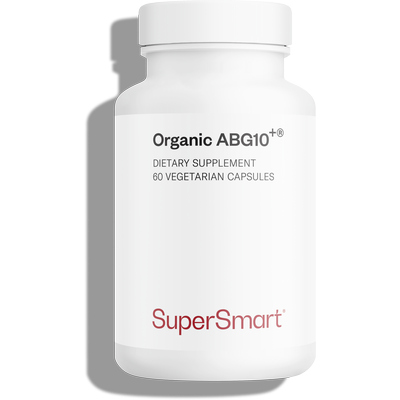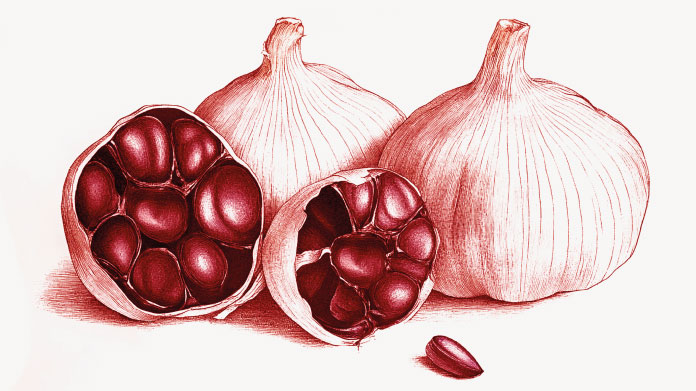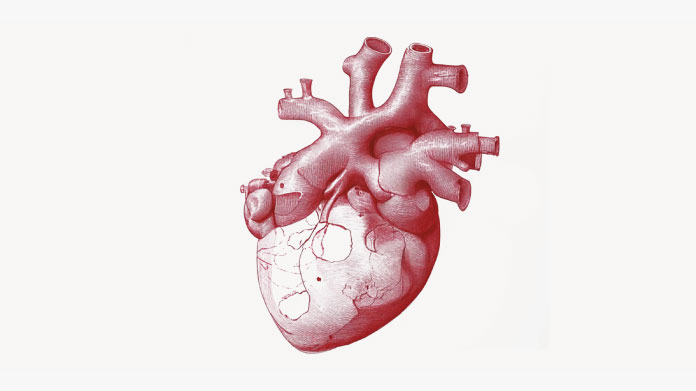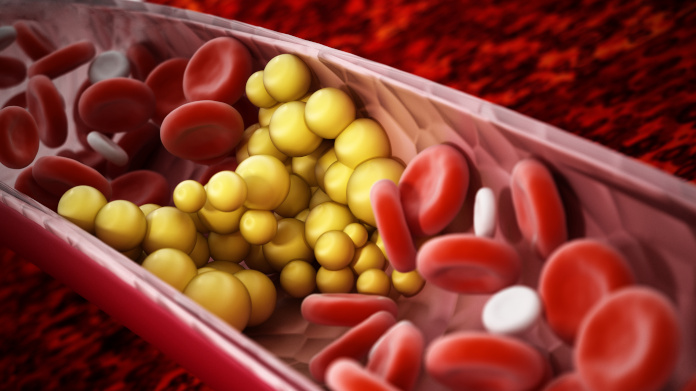Black garlic: what are the dangers, contraindications and side effects?
Black garlic is well-known for its anti-cholesterol and antioxidant properties, and is the subject of an unprecedented craze. But are you aware of the potential health risks? We take a look at the dangers and potential side effects of this famous natural ingredient.

Black garlic: fresh garlic heated and aged under specific conditions
Almost everyone is aware of the antioxidant and antibacterial benefits of fresh white garlic, but its pungent flavour and impact on breath severely restrict its consumption.
To overcome these unpleasant characteristics and improve its properties, several garlic derivatives have been developed, including black garlic.
This is not a particular variety of garlic (Allium), but the result of heat treatment: fresh garlic bulbs are heated to between 60-90°C under high humidity (50-95%) for many weeks, without any additional additives (1).
This heating process accelerates ageing through oxidation and crystallisation, transforming alliin and allicin to remove garlic's undesirable effects. It also gives the garlic a black colour (resulting from the Maillard reaction), a sweet and sour flavour, a syrupy texture and enhanced health benefits.
The health properties of black garlic
Developed in Japan in the early 2000s, black garlic has even more interesting properties than fresh garlic in several respects:
- its antioxidant activity is enhanced. Several studies (2-3) have shown that compared with fresh garlic, black garlic has higher levels of antioxidant compounds such as S-allyl cysteine (a 6-fold increase in this water-soluble antioxidant), polyphenols, flavonoids and certain enzymes (catalase, glutathione peroxidase, superoxide dismutase);
- it contributes to cardiovascular health and the maintenance of normal cholesterol levels. Several phenomena are thought to contribute to this: inhibition of platelet aggregation, normalisation of total cholesterol, triglyceride and homocysteine levels, normalisation of blood pressure and inhibition of lipid peroxidation, a key marker of cardiovascular risk;
- it supports the body's activity in times of stress and fatigue. In particular, black garlic helps the immune system to function properly, thanks to sulphur compounds (such as ajoene and diallyl trisulphide) with well-documented antibacterial and antifungal effects.
However, these benefits depend on the quality of the black garlic and processing variables such as time, temperature, humidity and pH. The black garlic extracts studied in the vast majority of scientific publications have been prepared under optimal, standardised conditions. It is therefore best to opt for reference black garlic supplements in capsule form (such as Organic ABG10+®, an organic extract prepared from garlic of European origin).
What are the potential dangers of black garlic?
The health risks of black garlic
The scientific literature shows that consuming black garlic presents only one major health risk: botulism (a rare but serious paralytic disease, most often food-borne). However, the risk is zero when you use black garlic food supplements.
By contrast, the risk increases if you process fresh garlic into black garlic at home. Why is this? Botulism is caused by botulinum toxin (the most powerful of all neurotoxins known in nature). It is produced by several anaerobic bacteria of the genus Clostridium, which are regularly found in fresh garlic in a non-pathological state. You won't have any problems if you eat fresh garlic cloves that contain Clostridium. But by heating them for a long time at inappropriate temperatures (below 60°C), you encourage the germination of Clostridium spores and therefore the production of neurotoxins. This can happen when you prepare your black garlic in poorly ventilated or poorly sealed household appliances such as a slow cooker or rice cooker (4).
Contraindications and interactions of black garlic
According to the World Health Organisation (WHO), there are only 2 contraindications to eating black garlic:
- garlic allergy. The rare symptoms of garlic allergy reported in the scientific literature are dermatitis (inflammation of the skin), urticaria (skin rash accompanied by itching and burning sensations) and allergic rhinitis (acute inflammation of the mucous membrane of the nasal cavity);
- erythropoietic porphyria (EPP). This is a rare defect in blood metabolism that makes the skin hypersensitive to light and leads to chronic anaemia. Symptoms (such as the appearance of blisters on exposed areas) can be exacerbated by garlic, reinforcing the parallel between this disease and the myth of the vampire (5).
Furthermore, the small quantities of black garlic consumed as part of the diet are unlikely to cause drug interactions. However, taking black garlic supplements may have an impact on the efficacy of certain substances:
- plants, food supplements and medicines with anticoagulant effects, as black garlic may increase the risk of bleeding. By extension, it is best to avoid taking black garlic before surgery;
- medicines used to treat infection by the human immunodeficiency virus (HIV);
- plants, food supplements and medicines with blood pressure-lowering effects, as black garlic may excessively support the lowering of blood pressure;
- medicines to prevent organ rejection after a transplant;
- medicines to treat diseases such as tuberculosis.
It is imperative to consult a health professional before taking any black garlic supplements if you are already taking any of these treatments. There are no documented interactions with levothyroxine (Levothyrox), which is generally prescribed in cases of hypothyroidism or thyroidectomy.
Side effects of black garlic
While white garlic gives off a strong, unpleasant odour (which persists in breath, sweat and mother's milk), this isn't the case with black garlic, since the heat treatment breaks down the organosulphur compounds responsible for the odour: allicin and alliin. So taking black garlic supplements like Organic ABG10+® has no negative effect on those around you.
There have been rare reports of nausea and gastric discomfort associated with excessive supplementation or taking poor-quality supplements.
SUPERSMART ADVICE
References
- Zhichang Qiu, Zhenjia Zheng, Bin Zhang, Xiaoming Lu, Xuguang Qiao, Characterization of the growth properties of garlic endophytes and their roles in the formation of black garlic, LWT, Volume 147, 2021, 111537, ISSN 0023-6438, https://doi.org/10.1016/j.lwt.2021.111537.
- Sang Eun Bae, Seung Yong Cho, Yong Duk Won, Seon Ha Lee, Hyun Jin Park, Changes in S-allyl cysteine contents and physicochemical properties of black garlic during heat treatment, LWT - Food Science and Technology, Volume 55, Issue 1, 2014, Pages 397-402, ISSN 0023-6438, https://doi.org/10.1016/j.lwt.2013.05.006.
- Bae, S. E.; Cho, S. Y.; Won, Y. D.; Lee, S. H.; Park, H. J. Changes in S-allyl Cysteine Contents and Physicochemical Properties of Black Garlic during Heat Treatment. Food Sci Technol - Lebensmittel-Wissenschaft & Tech. 2014, 55 (1), 397–402. DOI: 10.1016/j.lwt.2013.05.006.
- Tina Chen, Black garlic: Food safety considerations during production and storage, June 2023, National Collaborating Centre for Environmental Health.
- Poli A, Frieri C, Lefebvre T, Delforge J, Mirmiran A, Talbi N, Moulouel B, Six M, Paradis V, Parquet N, Puy H, Schmitt C, Aslangul E, de Fontbrune FS, Gouya L. Management of erythropoietic protoporphyria with cholestatic liver disease: A case report. Mol Genet Metab Rep. 2023 Oct 31;37:101018. doi: 10.1016/j.ymgmr.2023.101018. PMID: 38053924; PMCID: PMC10694760.
Keywords
15 Days
Reliable delivery
Reliable delivery. Good product.
Viva
29 Days
Great service
Great service
cl
31 Days
Received product promptly and its early…
Received product promptly and its early days but seems to have improved my daughters alertness.
Anandi
41 Days
Amazing
Amazing, great product!
ALEX Sinclair
44 Days
Good products and Swift handling
Good products and Swift handling
Trusted
49 Days
I trust the company's product
I trust the company's products, the quality is trustworthy and the speed of delivery is also appreciated.
NAJIB Malaah
49 Days
Good job.
This company is serious when it comes to serving it's customers. They are fast to send out the orders. Their site is great and easy. Also, they treat their return customers with great deals and discounts. Keep up the good work.
ABDULQADER Jehad
51 Days
I know frech ( level 3 of 6) and can…
I know frech ( level 3 of 6) and can read your messages, but since order are official documents I'd like to have this in english. Merci Ursula Mathes
Ursula Mathes
54 Days
I worried the delivery.
Box was intact, content correct but delivery time was 12 days. I started to worry!
VIITANEN Esa
57 Days
Supply of Chondroitin 6-sulphate
The company has provided the required product efficiently with no complications.
OldBear
58 Days
Supersmart sell a lot of interesting…
Supersmart sell a lot of interesting stuff. More than jut the usual vitamins though they do all those as well. Ordering pretty straightforward - you may need to try a couple of times to get the offers to apply but they do work. I queried something and had a fairly quick sensible reply. Postage takes a couple if days but you do get good progress information. Very well packed. Bought from Supersmart a few times and will do so again.
AT Griffin
12 Days
Excellent
On m'a mis bien.
cliente
15 Days
qualité des produits et services
qualité des produits et services
denis riegel
16 Days
Nehme das Produkt noch zu kurz um eine…
Nehme das Produkt noch zu kurz um eine Bewertung abgeben zu können
Ermelinde
16 Days
Très satisfait
J'apprécie la facilité de navigation sur le site, le suivi des commandes, et bien sûr, la qualité des compléments alimentaires.
LE COUR SERGE




